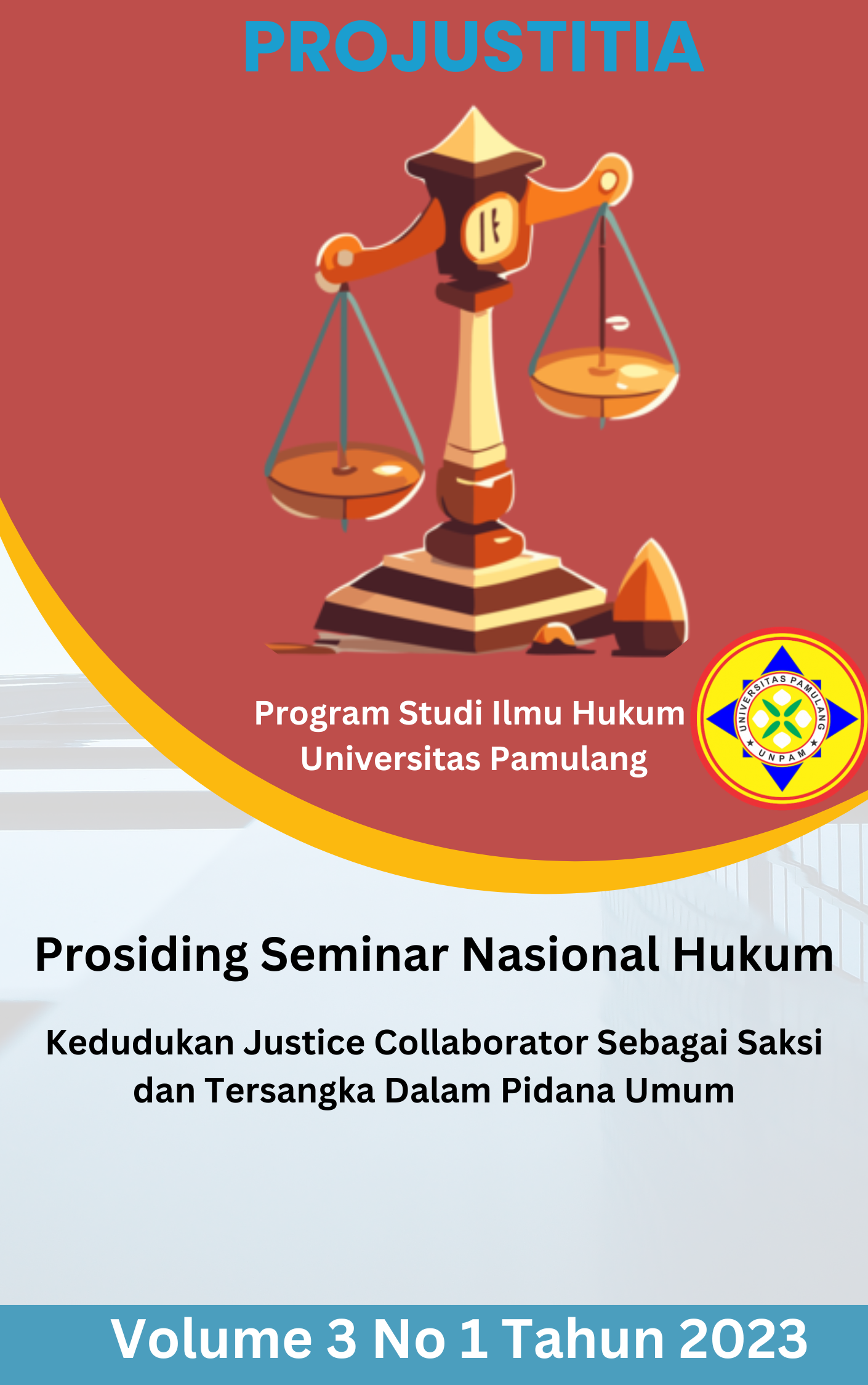ANALISIS PUTUSAN MAHKAMAH AGUNG NOMOR 116 PK/PDT.SUSPAILIT/2013 TENTANG KEWAJIBAN PAJAK TERHADAP PERUSAHAAN YANG DINYATAKAN PAILIT DITINJAU DARI UNDANG – UNDANG NOMOR 28 TAHUN 2007 KETENTUAN UMUM DAN TATA CARA PERPAJAKAN
Abstract
The purpose of this study: 1) To analyze the regulation of the state's preemptive rights over the payment of tax debts in Commercial Court Decisions. 2) To explore the basis for the judge's consideration in applying the state's preemptive right to payment of tax debt in the Supreme Court's jurisprudence Number 116 PK/Pdt.Sus-Pailit/2013 3) To formulate legal reasoning the judge did not apply the state's preemptive right to payment of tax debt in decision No. 116 PK/Pdt.Sus-Bankrupt/2013 This type of research is normative juridical with the statute approach, case approach, and conceptual approach. Legal materials were analyzed using 5 (five) theories, namely: the theory of legal reform, the theory of tax collection, the theory of legal protection, the theory of legal objectives, and the theory of ratio decidendi. The results of this study: (1) a) The unclear and incomplete definition of "preferred creditor" in the Elucidation allows for multiple interpretations by judges. b) This interpretation is detrimental to the state's preemptive rights, that is, it cannot be applied when faced with debts others in bankruptcy proceedings. (2) a) The state has the right to collect taxes on goods belonging to the taxpayer. b) KPP which is a state representative that cannot be positioned as a creditor based on Article 1 paragraph 2, 3, 6 and 11 of the KPKPU Law. (3) a) Judges recognize the right to precede the state, but judges must also comply with the principle of administering judicial power. b) In carrying out its authority, KPP was also proven to have committed negligence: KPP could not prove that the assets it argued were non-bankrupt assets; KPP submits a bill to the curator after 2 years of insolvency; KPP submits billing only in the form of estimates based on assumptions calculated before the taxpayer is declared bankrupt; The results of the settlement of bankruptcy assets are not sufficient, so that the distribution is carried out according to the principles of justice and balance; The renvoi procedure proposed by KPP is not in accordance with the correct stages.
Keywords : preemptive rights, taxes, bankruptcy


